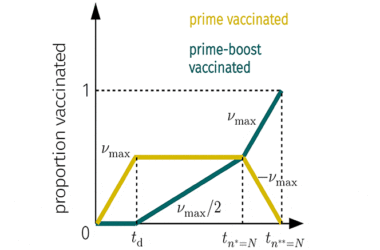
Une nouvelle étude a mis en évidence un processus jusqu’alors inconnu par lequel certains analgésiques AINS affectent l’organisme. Elle pourrait expliquer pourquoi différents AINS peuvent avoir des effets inattendus sur de nombreuses maladies, notamment les maladies cardiaques et le cancer.
La douleur et l’inflammation sont couramment traitées par des médicaments anti-inflammatoires non stéroïdiens (AINS) tels que l’ibuprofène et l’aspirine. Cependant, même à des doses similaires, différents AINS peuvent avoir des effets inattendus et inexpliqués sur de nombreuses maladies, y compris les maladies cardiaques et le cancer.
Or, une nouvelle étude, menée par Yale University, has uncovered a previously unknown process by which some NSAIDs affect the body. The finding may explain why similar NSAIDs produce a range of clinical outcomes and could influence how the drugs are used in the future.
The study was published today (May 23, 2022) in the journal Immunity.
Until now, the anti-inflammatory effects of NSAIDs were thought to arise solely through the inhibition of certain enzymes. However, this mechanism does not account for many clinical outcomes that vary across the family of drugs. For example, some NSAIDs prevent heart disease while others cause it, some NSAIDs have been linked to decreased incidence of colorectal cancer, and various NSAIDs can have a wide range of effects on asthma.
NSAIDs are available by prescription and over-the-counter (OTC). They are used to relieve fever and pain, such as those associated with headaches, colds, flu, and arthritis. Examples of prescription NSAIDs include ibuprofen, naproxen, diclofenac, and celecoxib. Ibuprofen and naproxen are also available OTC at lower strengths through brands like Advil, Motrin and Aleve.
Now, using cell cultures and mice, Yale scientists have uncovered a distinct mechanism by which a subset of NSAIDs reduce inflammation. And that mechanism may help explain some of these curious effects.
The research showed that only some NSAIDs — including indomethacin, which is used to treat arthritis and gout, and ibuprofen — also activate a protein called nuclear factor erythroid 2-related factor 2, or NRF2, which, among its many actions, triggers anti-inflammatory processes in the body.
“It’s interesting and exciting that NSAIDs have a different mode of action than what was known previously,” said Anna Eisenstein, an instructor at the Yale School of Medicine and lead author of the study. “And because people use NSAIDs so frequently, it’s important we know what they’re doing in the body.”
The research team can’t say for sure that NSAIDs’ unexpected effects are due to NRF2 — that will require more research. “But I think these findings are suggestive of that,” Eisenstein said.
Eisenstein is now looking into some of the drugs’ dermatological effects — causing rashes, exacerbating hives, and worsening allergies — and whether they are mediated by NRF2.
This discovery still needs to be confirmed in humans, the researchers note. But if it is, the findings could have impacts on how inflammation is treated and how NSAIDs are used.
For instance, several clinical trials are evaluating whether NRF2-activating drugs are effective in treating inflammatory diseases like Alzheimer’s disease, asthma, and various cancers; this research could inform the potential and limitations of those drugs. Additionally, NSAIDs might be more effectively prescribed going forward, with NRF2-activating NSAIDs and non-NRF2-activating NSAIDs applied to the diseases they’re most likely to treat.
The findings may also point to entirely new applications for NSAIDs, said Eisenstein.
NRF2 controls a large number of genes involved in a wide range of processes, including metabolism, immune response, and inflammation. And the protein has been implicated in aging, longevity, and cellular stress reduction.
Said Eisenstein, “That NRF2 does so much suggests that NSAIDs might have other effects, whether beneficial or adverse, that we haven’t yet looked for.”
Reference: “Activation of the transcription factor NRF2 mediates the anti-inflammatory properties of a subset of over-the-counter and prescription NSAIDs” by Anna Eisenstein, Brandon K. Hilliard, Scott D. Pope, Cuiling Zhang, Pranali Taskar, Daniel A. Waizman, Kavita Israni-Winger, Hui Tian, Harding H. Luan and Andrew Wang, 18 May 2022, Immunity.
DOI: 10.1016/j.immuni.2022.04.015



